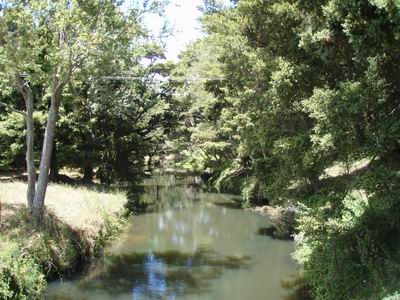Case study – Mangere River
The Mangere River has been monitored by the council since 1996 and is one of the region's most impacted rivers. It consistently ranked the lowest water quality of all 31 rivers in the River Water Quality Monitoring Network for 2006 and 2007 and generally has high nutrient concentrations, low water clarity and high bacteria counts.
A detailed investigation into the water quality in the Mangere catchment ran from April 2007 to December 2010 to determine the likely cause of the high nutrients and bacteria, and low water clarity.
All sites had elevated total nitrogen (TN) concentrations with less than 35 percent of samples below the ANZECC guidelines of 0.614mg/L for TN. The site on the Mangapiu Stream had the highest TN concentration and was above the guideline value on all sampling occasions.
The headwater sites had more than 60 percent of samples below the ANZECC total phosphorus guideline value of 0.033mg/L. The two most downstream sites and the site on Mangapiu Stream were above the guideline value on all sampling occasions.
All sites had E.coli levels below the 550/100mL value for less than 50 percent of the time. Water clarity was highest at the upstream sites and generally decreased downstream.
Of 17 rivers in Northland that have more than five years of data, the Mangere River has the highest number of improving water quality trends. There are improving trends in dissolved oxygen levels, pH, water clarity, turbidity, temperature and nutrients. This is seen as a positive indication that water quality in the catchment is improving, and that changes to land management practices – i.e. upgrading farm dairy effluent systems – are having a positive impact on water quality.
While things are improving, water quality is still severely impacted in this catchment and ongoing land management changes are required to continue to improve water quality.
 Mangere River.
Mangere River.
